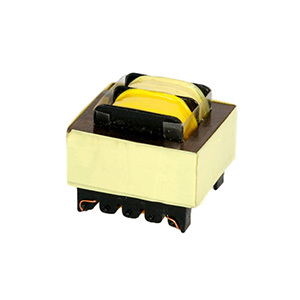NEWS
Why Low Frequency Transformers Are Essential for Efficient Energy Transmission
Release time:
Oct 31,2024
Why Low Frequency Transformers Are Essential for Efficient Energy Transmission
Table of Contents
- 1. Introduction to Low Frequency Transformers
- 2. What Are Low Frequency Transformers?
- 3. The Importance of Low Frequency Transformers in Energy Transmission
- 4. Functional Mechanisms of Low Frequency Transformers
- 5. Advantages of Utilizing Low Frequency Transformers
- 6. Applications of Low Frequency Transformers in Various Industries
- 7. Challenges in Implementing Low Frequency Transformers and Their Solutions
- 8. The Future of Low Frequency Transformers in Energy Systems
- 9. Frequently Asked Questions
- 10. Conclusion
1. Introduction to Low Frequency Transformers
In the ever-evolving landscape of energy transmission, low frequency transformers have emerged as vital components. These devices facilitate efficient electricity distribution, minimizing losses and enhancing system reliability. As global energy demands escalate, understanding the significance of low frequency transformers becomes increasingly essential.
2. What Are Low Frequency Transformers?
Low frequency transformers are electrical devices designed to transfer electrical energy between two or more circuits through electromagnetic induction. Operating at frequencies below 60 Hz, these transformers are particularly adept at handling the unique requirements of specific applications, such as in industrial settings or in power generation. By converting voltage levels while maintaining efficiency, they play an indispensable role in modern electrical systems.
The Design of Low Frequency Transformers
The design of low frequency transformers differs significantly from their high-frequency counterparts. They typically feature thicker wire and larger cores to handle lower frequencies, which results in improved magnetic coupling and reduced energy losses. Their construction is tailored to minimize eddy currents and hysteresis losses, optimizing their performance in energy transmission.
3. The Importance of Low Frequency Transformers in Energy Transmission
The importance of low frequency transformers stems from their efficiency and ability to support the stability of electrical grids. They ensure that energy is transmitted over long distances without significant losses, making them crucial for large-scale energy projects. Their functionality directly influences the overall performance of electrical systems.
Reducing Energy Losses
Energy losses in electrical systems can be detrimental to operational efficiency. Low frequency transformers are engineered specifically to minimize these losses, enhancing the overall effectiveness of energy transmission networks. By reducing the resistance encountered during energy transfer, they help maintain optimal performance levels.
Impact on Energy Costs
The efficient operation of low frequency transformers can lead to substantial cost savings. By lowering energy losses, utility companies can provide more reliable services at reduced rates. This translates into lower energy costs for consumers, showcasing the economic advantages of utilizing these specific transformers.
4. Functional Mechanisms of Low Frequency Transformers
Understanding the functional mechanisms behind low frequency transformers provides insight into their significance in energy transmission. These transformers operate on the principles of electromagnetic induction, where alternating current (AC) flows through coils of wire, generating a magnetic field that induces voltage in nearby coils.
How Low Frequency Transformers Work
When AC passes through the primary winding of a low frequency transformer, a magnetic field is created around it. This field induces a voltage in the secondary winding, allowing for voltage transformation. The ratio of turns between the primary and secondary windings determines the voltage output, enabling efficient energy conversion.
Role of Core Materials
The choice of core materials significantly impacts the performance of low frequency transformers. High permeability materials, such as silicon steel, are commonly used to minimize energy losses due to hysteresis and eddy currents. The core's design and material selection also contribute to the overall efficiency of the transformer.
5. Advantages of Utilizing Low Frequency Transformers
The advantages of low frequency transformers extend beyond energy efficiency. They play a crucial role in enhancing overall system reliability and performance. Here are some key benefits:
Enhanced Voltage Regulation
Low frequency transformers provide superior voltage regulation, ensuring that voltage levels remain stable even with fluctuations in load demands. This stability is essential for sensitive equipment and industrial processes, where voltage variations can lead to operational disruptions.
Improved System Reliability
By minimizing energy losses and optimizing voltage levels, low frequency transformers contribute to the reliability of energy systems. Their robust design allows them to withstand harsh operating conditions, ensuring continuous and stable energy transmission.
Versatility in Applications
Low frequency transformers are versatile and can be utilized in various applications, including power generation, renewable energy systems, and industrial processes. Their adaptability makes them valuable assets in diverse fields.
6. Applications of Low Frequency Transformers in Various Industries
Low frequency transformers find applications across multiple industries, each utilizing their unique characteristics to enhance energy transmission. Here are some notable applications:
Power Generation
In power generation facilities, low frequency transformers facilitate the conversion of generated electricity to suitable voltage levels for transmission. They ensure that energy is distributed efficiently to consumers while minimizing losses during the process.
Renewable Energy Systems
As the world shifts towards renewable energy sources, low frequency transformers play a pivotal role. They are essential in wind and solar power generation, where they help manage the variable nature of energy production, ensuring a stable output for the grid.
Industrial Automation
In industrial settings, low frequency transformers support various automated processes that require stable voltage levels. They are commonly used in manufacturing plants, providing the necessary energy to power machinery and equipment.
7. Challenges in Implementing Low Frequency Transformers and Their Solutions
Despite their numerous advantages, the implementation of low frequency transformers is not without challenges. Recognizing these challenges and identifying potential solutions can enhance their effectiveness.
High Initial Costs
One of the primary challenges associated with low frequency transformers is the high initial investment required for purchase and installation. However, the long-term energy savings and increased efficiency can offset these costs over time.
Space Requirements
Low frequency transformers often require more substantial physical space due to their size and design. This can pose logistical challenges in urban settings where space is limited. Careful planning and design considerations can mitigate these issues.
Maintaining Efficiency
To maintain optimal efficiency, regular maintenance and monitoring are essential. Implementing preventive maintenance schedules can ensure that low frequency transformers continue to operate at peak performance.
8. The Future of Low Frequency Transformers in Energy Systems
The future of low frequency transformers looks promising as energy systems continue to evolve. Their role in facilitating efficient energy transmission will only grow as the demand for reliable energy increases.
Integration with Smart Grids
The integration of low frequency transformers within smart grid technology is a significant development. By enhancing communication between energy producers and consumers, these transformers can optimize energy distribution and usage.
Advancements in Materials and Design
Ongoing research in materials and design will yield even more advanced low frequency transformers. Innovations aimed at reducing size and increasing efficiency are on the horizon, ensuring their continued relevance in the energy sector.
9. Frequently Asked Questions
What is a low frequency transformer?
A low frequency transformer is an electrical device that converts voltage levels between circuits at frequencies below 60 Hz, ensuring efficient energy transmission.
What are the main advantages of low frequency transformers?
The main advantages include enhanced voltage regulation, improved reliability, reduced energy losses, and versatility in various applications.
Where are low frequency transformers commonly used?
They are commonly used in power generation, renewable energy systems, industrial automation, and other applications requiring stable energy transmission.
What challenges are associated with low frequency transformers?
Challenges include high initial costs, space requirements, and the need for regular maintenance to maintain efficiency.
What is the future outlook for low frequency transformers?
The future outlook is positive, with advancements in technology and materials likely to improve efficiency and integration with smart grid systems.
10. Conclusion
Low frequency transformers are essential components in the landscape of efficient energy transmission. Their ability to minimize energy losses, enhance voltage regulation, and maintain system reliability underscores their critical role in modern electrical infrastructure. As industries continue to evolve and adapt to new energy demands, the significance of low frequency transformers will only increase, making them indispensable for a sustainable and efficient energy future. With ongoing advancements in technology and design, these transformers are poised to lead the way in revolutionizing energy transmission for years to come.


















